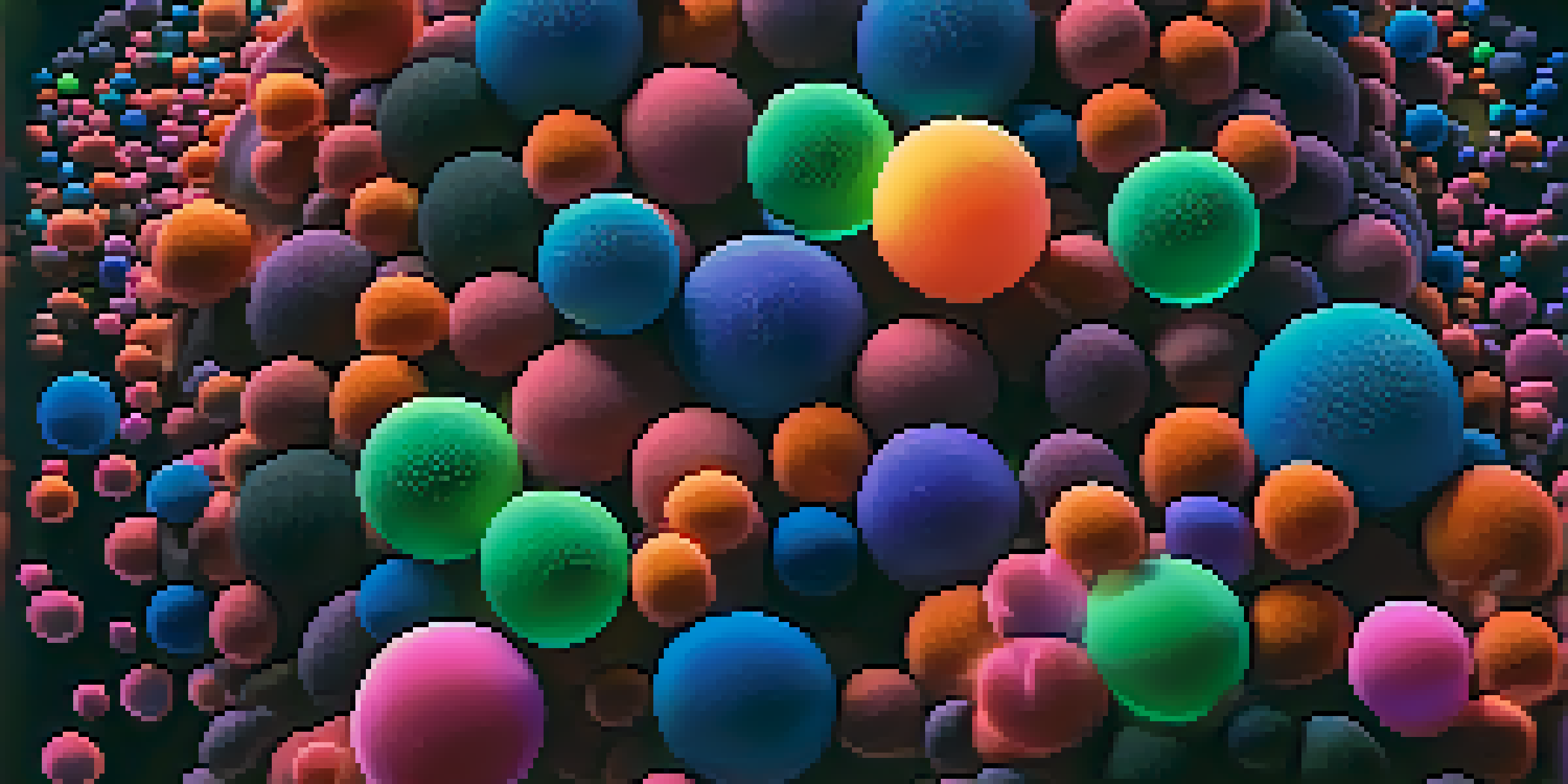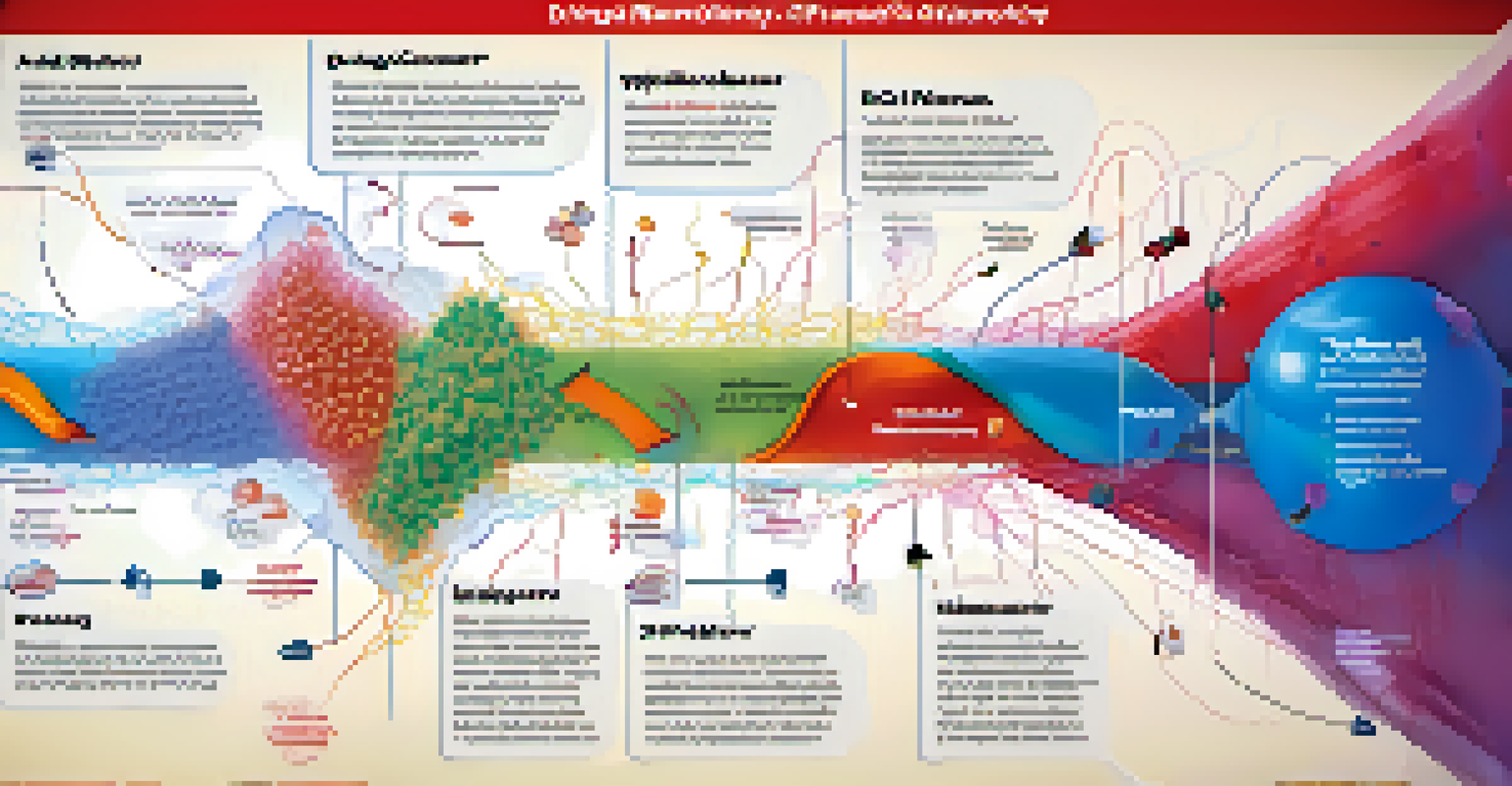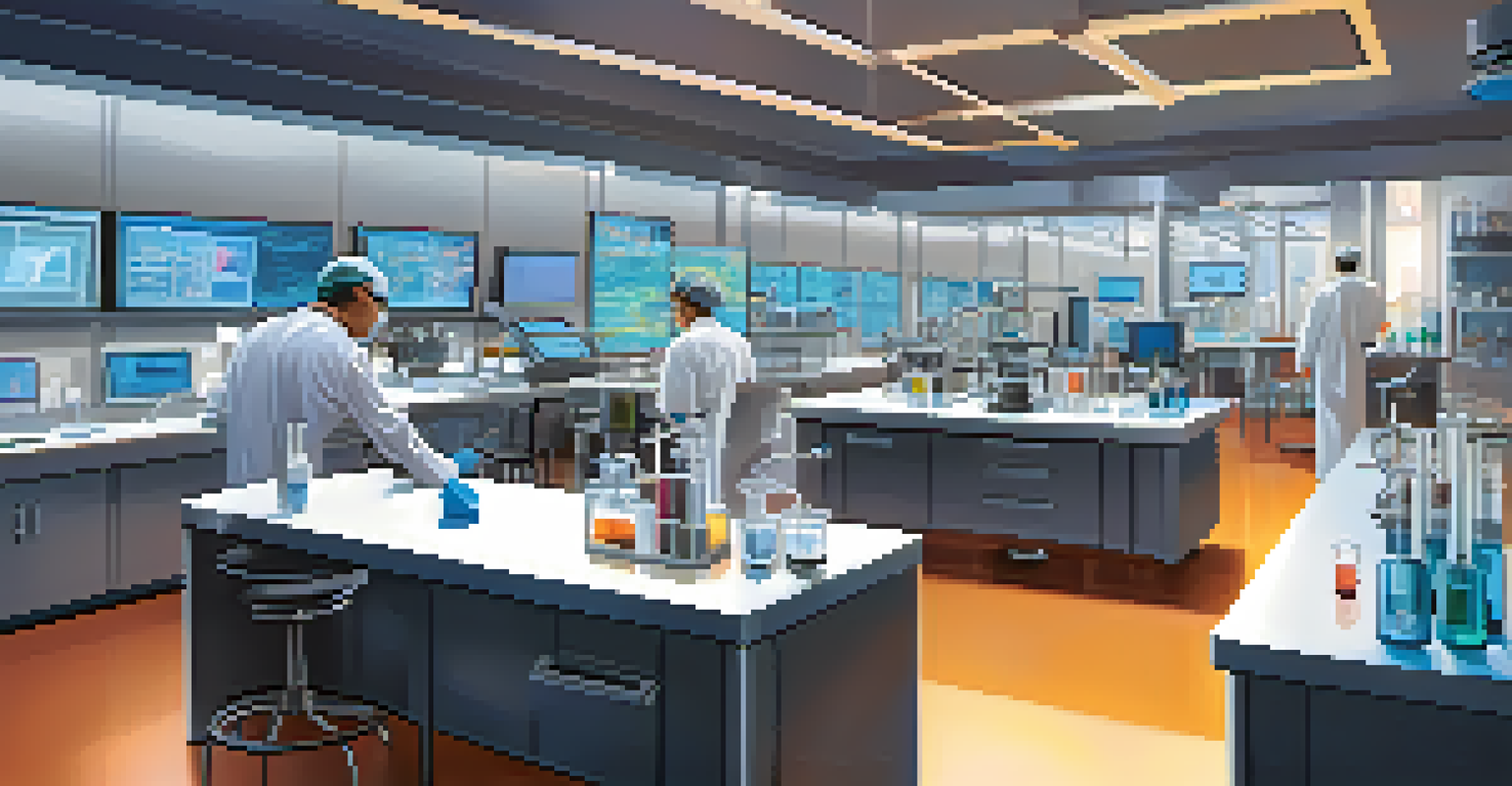Lipid-Based Nanocarriers for Enhanced Drug Bioavailability

Understanding Lipid-Based Nanocarriers and Their Function
Lipid-based nanocarriers are tiny vehicles designed to deliver drugs more effectively within the body. They are made from lipids, which are natural fats, that can encapsulate drugs, protecting them from degradation. Imagine them as little delivery trucks that help ensure medications reach their intended targets without getting lost or damaged along the way.
The art of medicine consists of amusing the patient while nature cures the disease.
These nanocarriers can improve drug solubility, which is essential for many hydrophobic (water-repelling) drugs that often struggle to be absorbed in the bloodstream. By overcoming this challenge, lipid-based nanocarriers can enhance the overall bioavailability of drugs—meaning more of the active ingredient is available to have an effect. This is similar to how a sponge can absorb water more effectively when it's designed to do so.
In essence, lipid-based nanocarriers serve as a bridge between complex medications and the body’s biological systems, ensuring that drugs perform at their best when they are needed most.
The Role of Bioavailability in Drug Effectiveness
Bioavailability refers to the extent and rate at which the active ingredient or active moiety is absorbed and becomes available at the site of action. This concept is vital in pharmacology, as it directly influences how well a drug works in the body. If a drug has low bioavailability, even high doses may not produce the desired therapeutic effect.

For instance, consider a medication that is poorly absorbed due to its chemical structure. If only a fraction of that drug enters the bloodstream, its effectiveness in treating a condition is significantly diminished. Lipid-based nanocarriers address this issue by enhancing the solubility and stability of these medications, allowing for greater absorption.
Lipid Nanocarriers Enhance Drug Delivery
These tiny vehicles improve drug solubility and bioavailability, ensuring medications reach their targets effectively.
Ultimately, improving bioavailability can lead to more effective treatments, reduced side effects, and potentially lower dosages, which is a win-win for both patients and healthcare providers.
Advantages of Using Lipid-Based Nanocarriers
One of the primary advantages of lipid-based nanocarriers is their ability to encapsulate both hydrophilic (water-loving) and hydrophobic drugs. This versatility means that a wide range of medications can benefit from this delivery system. Think of it like a multi-purpose toolbox that has the right tools for various jobs.
Drugs are not always what we need; sometimes we need to rethink the way we deliver them.
Additionally, lipid-based nanocarriers can improve the stability of drugs, protecting them from factors that might cause degradation, such as light or heat. This means that medications can have a longer shelf life, making them more reliable for patients. It's akin to how some foods are stored in airtight containers to preserve freshness.
Furthermore, these nanocarriers can be engineered to target specific cells or tissues, which maximizes therapeutic effects while minimizing side effects. This targeted approach is especially important in treatments like cancer therapy, where it’s crucial to deliver drugs directly to the tumor site without harming surrounding healthy tissues.
Challenges in Developing Lipid-Based Nanocarriers
Despite their potential, developing lipid-based nanocarriers is not without challenges. One major hurdle is ensuring the consistency and reproducibility of the nanocarrier formulation. Just like baking a cake, if the ingredients aren’t mixed just right, the final product may not turn out as expected.
Moreover, the choice of lipids and the method of preparation can significantly affect the properties of the nanocarrier, including size, stability, and drug release rates. Researchers must carefully balance these factors to create an effective delivery system. It’s a delicate dance of chemistry and engineering that requires precision and expertise.
Targeted Therapy Reduces Side Effects
Lipid-based nanocarriers can be engineered to deliver drugs directly to specific cells, maximizing therapeutic effects while minimizing harm to healthy tissues.
Lastly, regulatory hurdles can also slow the introduction of new lipid-based nanocarrier products. The process of getting approval from health authorities is rigorous, ensuring that any new treatment is safe and effective for patients.
Current Applications in Medicine
Lipid-based nanocarriers are making waves in various medical applications, particularly in cancer treatment and vaccine delivery. In cancer therapies, these nanocarriers can deliver chemotherapeutic agents directly to tumors, enhancing efficacy while minimizing side effects. This targeted delivery is like having a precision missile rather than a scattergun approach.
In the realm of vaccines, lipid nanoparticles have gained attention for their role in delivering mRNA vaccines, such as those developed for COVID-19. These nanoparticles protect the fragile mRNA strands, ensuring they reach the cells where they can trigger an immune response. It’s a remarkable innovation that showcases the versatility of lipid-based nanocarriers in modern medicine.
As research continues, we can expect to see even more applications emerge, potentially transforming how we approach treatment for a wide range of diseases.
Future Directions in Nanocarrier Research
The future of lipid-based nanocarriers looks promising, with ongoing research aimed at improving their design and functionality. Scientists are exploring new lipid materials and combinations that could enhance the targeting capabilities and loading capacity of these nanocarriers. Imagine upgrading a smartphone with the latest technology to improve its performance.
Moreover, advancements in nanotechnology are paving the way for smarter nanocarriers that respond to specific stimuli, such as changes in pH or temperature. These smart carriers can release their drug payload only when they reach the desired site in the body, further increasing treatment efficacy. It’s like having a delivery system that knows when and where to drop off its package.
Future Innovations in Nanocarrier Design
Ongoing research aims to develop smarter nanocarriers that respond to bodily stimuli, improving the precision of drug delivery systems.
As we continue to unravel the complexities of drug delivery systems, lipid-based nanocarriers will likely play a central role in revolutionizing how we administer medications, making treatments safer and more effective.
Conclusion: The Promise of Lipid-Based Nanocarriers
Lipid-based nanocarriers represent a significant advancement in drug delivery systems, offering a solution to the challenges of low bioavailability. By encapsulating drugs and enhancing their absorption, these nanocarriers can improve treatment outcomes and patient experiences. It’s a transformative approach that could change the landscape of modern medicine.
As we continue to explore the potential of these nanocarriers, it's clear that they hold the key to unlocking new therapeutic possibilities. The integration of nanotechnology into pharmaceuticals is not just a trend; it’s a necessary evolution in how we think about drug delivery.

In summary, lipid-based nanocarriers are an exciting frontier in the quest for more effective treatments, promising a future where medications are not only safer but also more powerful in their ability to heal.